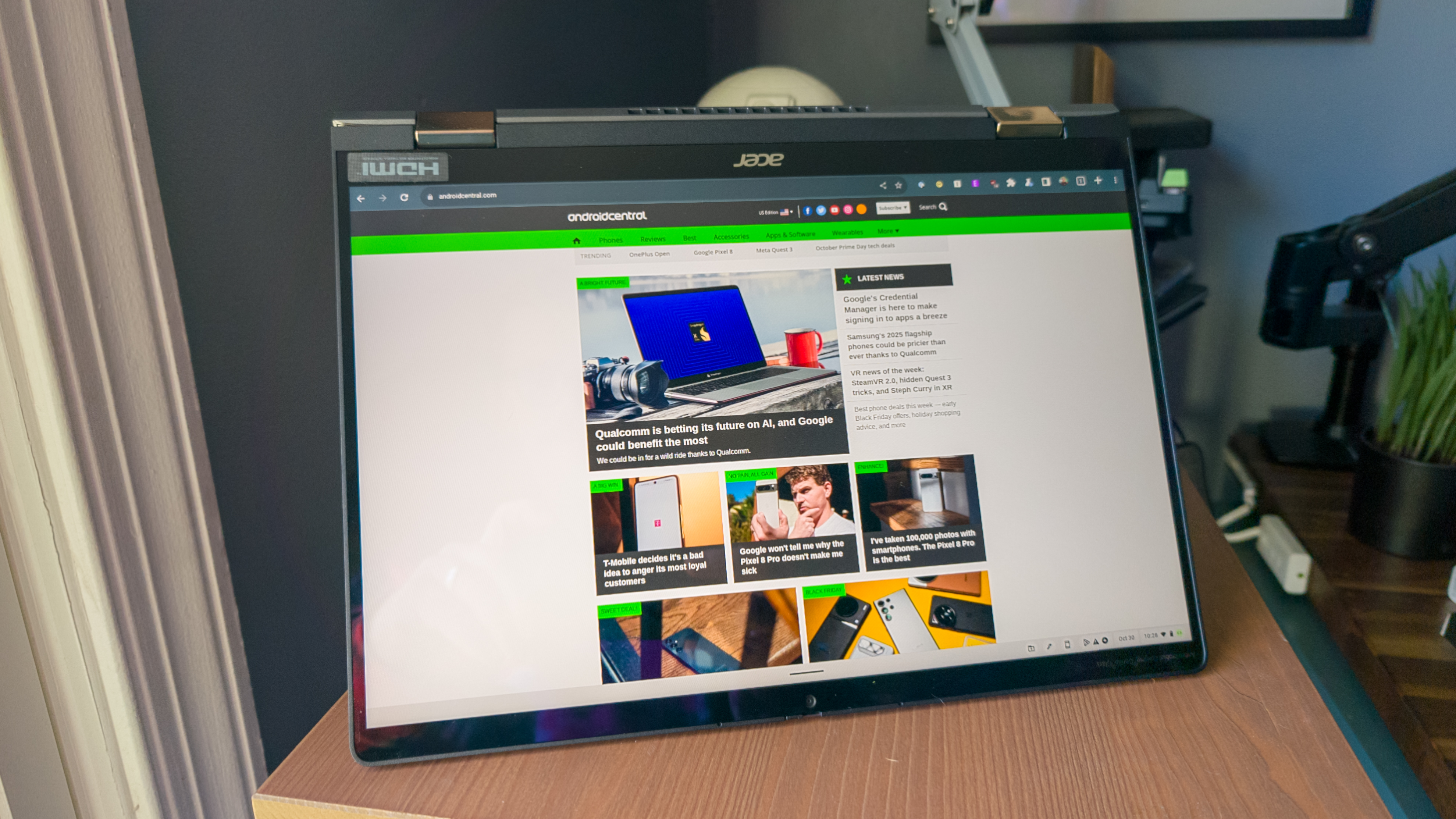Past the Alphabet

Past the Alphabet is a weekly column that focuses on the tech world each inside and outside of the confines of Mountain View.
We’re long-removed from the times when Chromebooks have been principally nothing extra than simply Chrome on a laptop computer. Whereas there are nonetheless some limitations when in comparison with Home windows or macOS, Google’s ChromeOS improvement continues to be relatively spectacular. Nonetheless, Google is gearing as much as convey in regards to the largest change to the platform since its inception.
For the previous few years, we have heard and seen mentions of “Lacros,” which stands for “Linux And ChRome OS.” Basically, it is simply the identical Chrome browser that you’d use on every other desktop OS. In that vein, Google is engaged on de-coupling Chrome, the browser, from ChromeOS, the working system.
This does not imply that you’ll not have Chrome in your Chromebook; as an alternative, it’s going to resolve just a few of the platform’s issues, the largest of which is the lack to obtain browser updates after your Chromebook has reached its AUE date. It is not necessary from the standpoint of getting new options, nevertheless it is necessary in terms of receiving safety patches that might compromise your accounts.
Decoupling Chrome would permit you to obtain and set up updates for the browser for, hopefully, years to come back. Doing so would significantly scale back the stigma round Chromebooks changing into e-waste after the AUE date is met.
Google has been engaged on other ways to cut back the e-waste launched by Chromebooks. The latest change got here in September 2023, when Google introduced Chromebooks which were launched since 2019 would obtain updates for ten years. This can be a particular enchancment over the earlier eight-year dedication, however Google is not completed simply but.
Advantages of Lacros

If completed proper, you in all probability will not discover a distinction between the Chromebook you are at the moment utilizing and the most effective Chromebooks after this replace is launched. That is sort of the purpose of all of it and explains why this alteration has taken so lengthy to implement. Nonetheless, there are a few different advantages to having Lacros in comparison with the ChromeOS that we now have at this time.
For one, you may not want to modify between consumer accounts simply because you will have a number of profiles. The identical profile switcher that’s at the moment obtainable in Chrome on Home windows, macOS, and Linux will now be obtainable in your Chromebook.
Talking from expertise, that is arguably the largest motive why I jumped on the probability to allow Lacros as quickly as I might. I need not take care of logging out of 1 account and into one other when the Chrome browser already has profile switching. With so many different quality-of-life enhancements coming to ChromeOS, this is only one extra that provides one other feather within the cap for the platform.
This leads us to a different motive why Lacros on ChromeOS is a giant deal: we ought to get a constant expertise throughout the board. So, every other options that you simply get pleasure from when utilizing Chrome on different desktop platforms are prone to make their option to Chromebooks.
The Chrome expertise on ChromeOS will not make you’re feeling like a second-class citizen in comparison with Home windows or macOS.
It looks as if this is able to be a foregone conclusion, however due to how tightly built-in Chrome is to ChromeOS, it simply hasn’t been doable for one motive or one other. Fortunately, Lacros will seemingly “resolve” this drawback and hopefully keep away from every other potential annoyances.
Circling again to updates, whereas it is necessary to cut back the quantity of e-waste, there’s one more reason why this eventual cut up is important. At the moment, each Chrome and ChromeOS obtain an replace on a four-week cadence. Nonetheless, there are occasions when an replace for ChromeOS is delayed for one motive or one other, often associated to a bug that must be fastened.
The issue right here is that if there is a crucial safety patch that must be rolled out, Google cannot accomplish that with out updating the complete working system. Whereas, in the event you’re utilizing Chrome on Home windows, you may seemingly see a “Relaunch to Replace” immediate seem within the prime proper nook of the browser window. With Lacros, Google can push an replace to the browser, separate from the OS, and implement any essential adjustments instantly.
Is there a catch?

By now, you are in all probability ready for me to speak about “the catch,” whether or not it is a characteristic that can not be current or damaged performance in ChromeOS. Hopefully, since Google has been engaged on this for therefore lengthy, there will not be a “catch” to fret about.
If all goes in keeping with play, you may replace your Chromebook at some point and you will not even discover a distinction. Except, after all, you are like us and browse via any changelogs which might be made obtainable when updates arrive.
Because it at the moment stands, you possibly can strive making the change by yourself Chromebook, offered that you simply’re okay with enabling the #lacros-only flag. After a restart, the one distinction you would possibly see is that the Chrome icon is modified to the identical one because the Chrome Canary icon. Apart from that, you possibly can simply proceed utilizing Chrome the identical manner you all the time have.

It is value declaring that when this does make its option to the steady construct of ChromeOS, those that like tinkering with flags will discover a change. At the moment, if you wish to allow any flags to strive new options, you are able to do so by navigating to “chrome://flags.” With Lacros enabled, that shortcut remains to be obtainable however solely applies to the browser. So, if you wish to fiddle with any system-level flags, you may navigate to “os://flags.”
I want I have been capable of sit right here and let you know when the change was set to be carried out, however sadly, we simply do not know but. Robby at Chrome Unboxed discovered that Lacros was the default browser on ChromeOS Canary Model 124, however I am utilizing Model 125, and it is again to “regular.”
Whereas it is extremely unlikely to come back within the subsequent steady launch, we expect Google to make the largest change to ChromeOS sooner or later within the very close to future. However when it does come, you might not even know.


